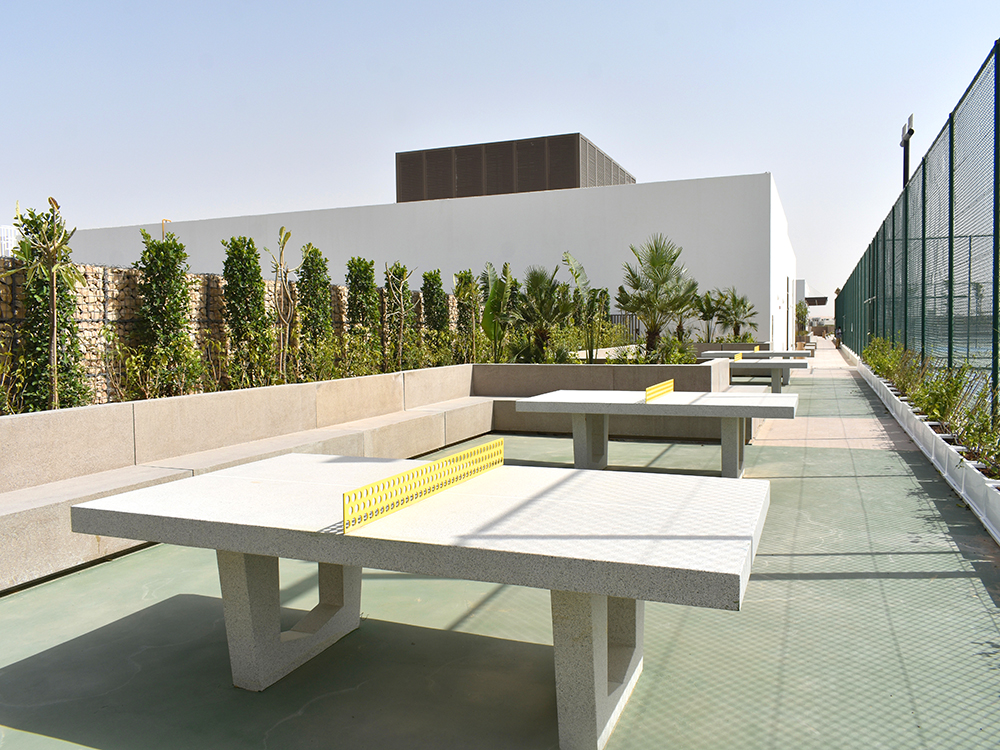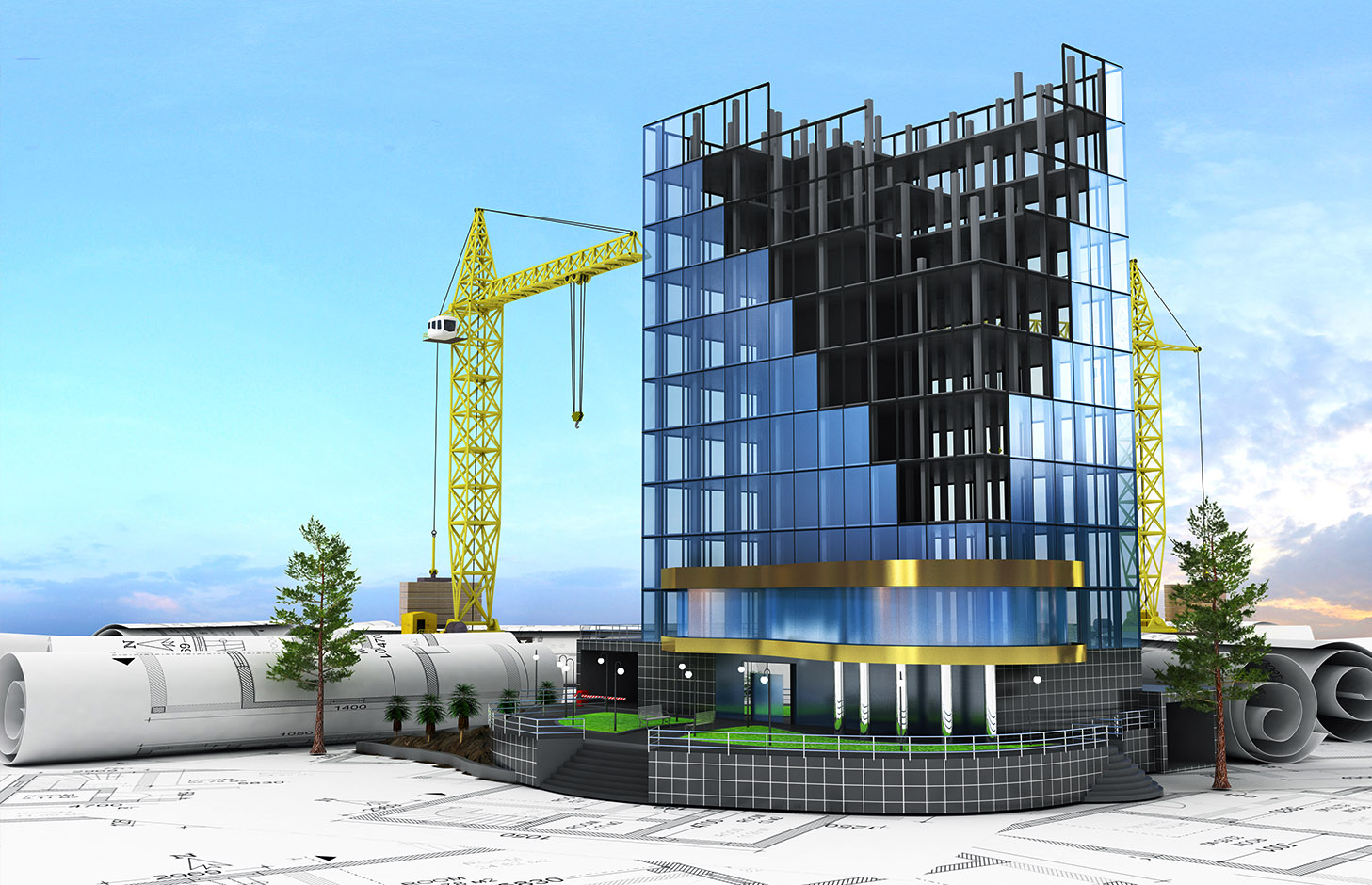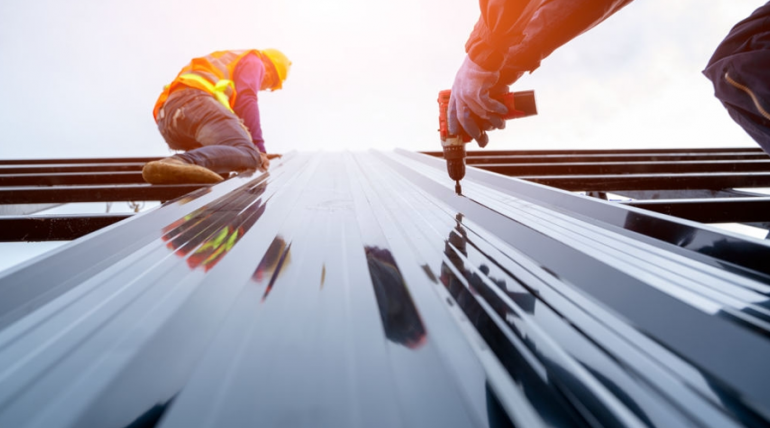About us
Our team manages the entire project process from the concept and design phase to construction, values engineering, supervises and deals with post-completion defects. Arab land Contracting LLC has multifaceted activities, including main concrete, steel structures and fit outs, We believe in delivering the highest quality work, matched with an equal service quality and priority to safety and teamwork encouragement
Our Core Services
Residential & Commercial Contracting – From small yards to beautifully designed gates and entrances to complete villas and large community clusters, Arab Land Contracting offers A to Z stages of contracting services.
Our News
Our team would be happy to assist you with any of your projects. Please, check out our blog for answers, make an appointment or contact us.
Our sister company Green and More were the main sponsor of the first Landscape Middle East Awards Ceremony 2019. Professionals in the industry were presented their awards by Green and More’s director, Mr Waleed Al Wahsh.


Those awarded had definitely displayed through their hard work and dedication, that they strived tirelessly to leave a positive impact across the field of landscape in the region, fueled by creativity and innovation.

We are thrilled and it is our utmost pleasure that our sister company has taken part in this prestigious event.
We are proud to announce that our sister company, Green and More, were part of the Landscape Middle East Awards Ceremony 2019.

This unique event highlights the importance of landscape architecture in the growth of our cities, communities, and its effect on the health, wellbeing and the quality of people’s lives.

From concept to creation
Whether the type of service requested is a new construction, a remodeling or additions request, Arab Land Contracting covers a project stages from A to Z.

Our Blog
Our team would be happy to assist you with any of your projects. Please, check out our blog for answers, make an appoinment or contact us.
It’s no secret that technology is revolutionising literally every aspect of modern day life. The construction industry, continually being updated and upgraded with the most recent technology, is one such example of this.
Technology in construction comes with devising innovative new ways of constructing and whilst the changing future of construction is largely unknown, there are some construction technology trends that are paving the way for certain futuristic construction technology.
So, what can we definitely expect the future to hold for construction? Right here’s ten futuristic construction technologies of the future for you to have a gander at.
1. Self-healing concrete
Millions of pounds are invested in maintaining, fixing and restoring roads, buildings, tunnels and bridges annually. This is because all concrete eventually cracks and needs to be restored. Self-healing concrete would add years to a building’s life and be an enormous help time-wise and financially.
The science behind this technological marvel shows itself when water enters a crack. This reactivates the bacteria that was mixed in during the mixing process. When the bacteria is activated, it excretes calcite which then heals the crack.
2. Transparent aluminium
Transparent aluminium is a bullet-proof new state of matter that is almost as strong as steel. Despite its herculean strength, it looks like glass which is four times weaker and shatters easily. Transparent aluminium is a new material and a see-through metal that is just breaking through the construction industry and adds a futuristic feel to buildings.
This new material is such advanced construction technology that it is made out of aluminium oxynitride (AION) and is created through the use of laser technology.
3. Aerogel insulation
Sometimes known as ‘frozen smoke’, aerogel is semi-transparent and is produced by removing the liquid from a gel, leaving behind the silica structure which is 90% air. Despite being practically weightless, aerogel holds its shape and can be used to create thin sheets of aerogel fabric.
Aerogel fabric is beginning to be used within the construction industry, due to its incredible insulation properties. Aerogel insulation makes it extremely difficult for heat or cold to pass through and has up to four times the power of fibreglass or foam insulation.
4. Robotic swarm construction
Developed by researchers at Harvard, robotic swarm construction was designed based on how termites work. Termites work together like a ‘swarm’ and construction robotics are programmed to work together in this manner.
Four-wheeled robots are programmed in each instance to build a certain design and come with sensors to detect the presence of other robots, so that they can work together.
5. 3D printed houses
3D printed houses are a glimpse into the future of construction. 3D printing homes will involve creating parts off-site and constructing the building on another occasion. It was pioneered by Apis Cor and based on San Francisco recently proved that they can 3D-print walls out of concrete in a relatively short space of time.
The ‘printer’, which is similar in look to a small-scale crane, sets layers of concrete mixtures. 3D printed homes could be a great solution for quickly covering the housing needs of people who have been affected by physical disasters such as tsunamis, hurricanes and earthquakes or for those in poverty.
6. Smart roads
Also known as smart highways, smart roads are the future of transport and involve using sensors and IoT technology to make driving safer and greener. They give drivers real-time information regarding traffic information (congestion and parking availability as an example) and weather conditions. This innovative technology can generate energy, charging electric vehicles on the move, as well as for street lights.
7. Bamboo cities
Bamboo cities are cities made from innovative modular bamboo structures that interlock. It’s a form of sustainable construction and a renewable resource that is more powerful than steel and more resilient than concrete. The purpose is to hold a new community in the trees and as the number of inhabitants increases, the structure will extend to accommodate this.
As the structure extends to accommodate the number of people, it grows in strength. Modular structures are incredibly scalable and can grow in any direction, making it perfect for a city in the trees. Another added bonus– they can resist earthquake tremors due to bamboo’s high flexibility.
8. Smart bricks
Smart bricks are modular connecting bricks and are similar to ‘Lego.’ Made out of high strength concrete and developed by ‘Kite Bricks’, smart bricks are versatile and come with substantial thermal energy control and a reduction in construction costs. As they are modularly designed, they are easy to connect and have space for insulation, electricity and plumbing.
9. Vertical cities
Vertical cities may very soon become reality as the world’s population grows and land increasingly becomes scarce. They are tetris-like buildings of towers for thousands of people to inhabit. Supporting an blooming population, vertical cities are a space-saving solution to preserve land for food, nature and production.
10. Pollution fighting buildings
Likewise known as ‘vertical forests’, they are high-rise forest buildings designed to tackle air pollution. Pollution fighting buildings will be home to over 1,000 trees and 2,500 shrubs to absorb pollution in the air and to help filter it to make the air cleaner. Trees are highly productive in absorbing carbon dioxide, making this a cost-effective construction innovation.
When you think about technological advancements, your mind might automatically gravitate toward industries like medicine or electronics. The construction sector doesn’t automatically seem like the kind of industry with innovative technological advances, but in reality, it’s one of the most innovative industries out there.
This is due to the fact that the construction industry has always responded with innovation when confronted with difficult circumstances that require the construction sector to change. This adaptability has helped propel the industry helped propel things like designing, developing, and building a skyscraper in one of the most effective manner.
Presently, the industry has been responding to things like the skilled labor shortage, new sustainability regulations, and advancements in information technology and software, and the resulting tech is just as futuristic. Things like robot workers to 3D printed houses have become a reality so quickly that we might not have realized it. In fact, there are so many advancements happening so quickly that it’s sometimes hard to keep track of it all.
Below we’ve broken down 8 of the most innovative advancements in the construction technology you’re likely to see in the coming years.
1. LiDAR
Thanks to LiDAR, or light detection and ranging, sensors mounted on construction equipment can scan the surrounding worksite and produce high-resolution 3D images in real-time. This makes it possible to perform site work from a distance, reducing or eliminating the likelihood of a worker getting hurt. This is especially critical in industries like logging, which is the second most dangerous industry in the United States.
Though LiDAR is incredibly useful, it’s also very fragile– the LiDAR sensor capacity is limited in conditions like heavy dust, rain, snow, or fog
2. Humanoid Laborers
In response to the continuing labor shortage plaguing most labor industries, Japanese researchers have developed the HRP-5P, a humanoid robot capable of performing basic physical tasks like installing drywall independently. Other robot laborers include a semi-automated mason and the Tybot, which ties rebar on bridges in half the time it takes a human crew.
On one hand, automating dangerous tasks takes human workers out of the risk of harm; however, it also takes them out of the workforce, which is why industry leaders are recommending widespread retraining to help retain employees in fields that are already short on workers.
3. Robot Swarms
Unlike humanoid robots, which are built to vaguely resemble people, robot swarms consist of hundreds of tiny robots that are designed to work together like a collection of insects. Researchers at Harvard’s Self-organizing Systems Research Group have designed a swarm of tiny, four-wheeled robots that can operate as a cohesive unit to perform tasks like laying bricks.
Applications for robot swarms in construction are effectively limitless. They could safely repair infrastructure in flooded or hard-to-reach locations that are dangerous for a human worker, and could even build structures that are impossible for people to reach, like the deep sea or even the surface of Mars.
4. Connected Hardhats
Wearable tech has already infiltrated the personal gadget space, but applications in construction can do more than just monitor heart rate or capture photos on the sly. The Japanese company Shimabun recently released an upgrade kit that can be used to outfit standard hardhats with a range of advanced safety capabilities.
The Shimabun-equipped hardhat can monitor location, motion, and temperature, enabling it to warn that a worker might be lightheaded or overheated. It can also perceive if a worker has fallen and trigger an emergency call to first responders. The exactness of the data collected also makes it possible to perform better assessments of worksite mistakes to better prevent repeat occurrences.
5. SmartBoots
Another wearable tech advancement, SmartBoots are equipped with sensors that can measure worker fatigue, alert first responders in an emergency, and communicate with heavy equipment to prevent vehicle accidents. The boots are powered by the energy generated by the worker’s steps and are equipped with RFID devices that immediately identify workers when they enter the site and make it possible for site managers to automatically assign tasks over mobile devices.
SmartBoots are likely to make a wider appearance in coming years, not only on construction sites, but also in military defense and first responder environments.
6. Smart Infrastructure
Structural monitoring systems, like those developed by Hexagon Geosystems, use sensors to monitor the strengths and weaknesses of a given structure that are invisible to the human eye. These monitors can help predict structural problems before they happen, allowing the site owner to bring in a construction crew to perform necessary maintenance before the site becomes dangerous.
In natural settings like rock falls and mines, monitoring technology can be used to assess the structural integrity of a site to reduce workers’ risk exposure and alert crews to hazardous conditions.
7. Virtual and Augmented Reality
For many years, military and civilian pilots have used airplane simulators to train in a life-like environment without any of the risk of actually operating a plane. Now, the same technology has made its way into equipment operator training.
Virtual reality training is more engaging than video or lecture curricula, offers more accurate and lifelike preparation, and can also allow an individual to take more control of the rate at which they learn. But that’s not all– VR also allows equipment operators to run simulations that are too dangerous to replicate, like a natural disaster or major equipment malfunction.
Where VR is a strictly digital experience, augmented reality is the application of VR technology in real-world scenarios. With AR, workers can view layers of plans and data while on site by using wearable lenses or a camera-equipped mobile device.
That means a contractor could hold a tablet up inside a home and see the locations of every necessary drill hole without having to check the physical building plan, or a project manager could take a client through several proposed window designs and make plan modifications while standing in front of the window itself. AR technology also makes it possible to generate 3D models on top of a 2D plan, allowing for more accurate architectural planning.
8. Eco-Friendly Construction Tech
Sustainable construction has largely to do with conserving natural resources, which includes water. Advancements in water collection and filtering technology have changed the way that new structures’ plumbing and wastewater systems are designed.
Rainwater harvesting, dual plumbing, and greywater reuse are all examples of updated water supply techniques that can lower water waste by as much as 15 percent.
As green buildings become more popular, it’s become essential for contractors to be able to deliver on energy efficiency specifications. Building management systems and energy monitors make it possible to accurately measure operational costs and adapt build specifications to meet required efficiency levels.
by: Liam Stannard
Source: big rentz
If it’s not broken don’t fix it, right? Despite technological progress, it’s not uncommon for construction companies to still depend on spreadsheets, manual data entry, and paperwork. Low IT budgets and lack of time for training have contributed to a hesitancy around adopting new methods and modern technology.
Emerging building and construction technology isn’t just a fad or a fun new toy. There are real, practical applications and benefits to modernizing your current processes. And if your construction company wants to remain competitive and not be left behind, you’ll need to find ways to integrate new approaches into your strategy and workflows.
These cutting-edge technologies are drastically changing how the industry operates and how future projects will be completed.
Types of Construction Technology Impacting the Industry:
– Mobile Technology
– Drones.
– Building Information Monitoring (BIM).
– Virtual Reality and Wearables.
– 3D Printing.
– Artificial Intelligence.
1. Mobile Technology.
Mobile technology isn’t only for games anymore. Apps are becoming more of the norm in construction, and for good reason. The increased portability of tablets and smartphones allows for greater communication and the ability to work from anywhere. Integrating this type of technology into your current processes can be much simpler and require a smaller upfront investment while still providing major benefits and boosting productivity in your day to day operations. So if you want to start implementing technology, this is a good place to start.
Mobile technology can help to save time and keep your project moving forward faster by providing real-time updates and making information available between the job site and the office. You can easily access the latest revisions to plans or report a problem to the project manager off site.
2. Drones.
Drones are the most widely used emerging construction technology. They can conduct site surveys more quickly and accurately than a crew on the ground and are cheaper than aerial imaging. Their high resolution cameras and the data collected can create interactive 3D or topographical maps and models, and take volume measurements.
One more benefit of using drones is the ability to inspect hard to reach places such as bridges or around tall buildings, and to do it safely. You can also use them to monitor progress on a job site and see how people are working.
3. Building Information Modeling (BIM).
BIM is similar to CAD (computer aided design), but not exactly the same. It is software for 3D design to digitally model what will be built. But it’s capabilities don’t stop there: “It doesn’t just create a visually appealing 3D model of your building– it creates numerous layers of metadata and renders them within a collaborative workflow,” writes Engineering.com. It captures things in a way that paper just can’t.
32.7% of builders are currently using BIM/CAD software, JBKnowledge reports in their 2016 survey. The use of BIM has even been mandated in the UK for government construction projects.
The use of BIM provides space for better collaboration because each person and expertise area can add their piece to the same model, instead of broken out onto multiple versions of a 2D paper drawing. This way, the model evolves immediately as people contribute, streamlining the process and increasing efficiency. BIM also helps with problem solving in the design and planning stages of a project, by automating clash detection and providing a more complete picture of the project.
4. Virtual Reality and Wearables.
Virtual reality technology is often used in conjunction with BIM to help better understand complex projects. Think of the potential: you create a building design with BIM and then are able to use VR to actually walk around it. Pretty cool, right? This will give your team, or the client, an even more realistic idea of what the project will look like once completed. Having a more complete grasp on the project before it begins gives you the opportunity to avoid big changes and expensive change orders mid-way through.
Wearables are a construction technology that will have an impact on job site safety and risk management. The Daqri smart glasses, though still in the early stages, are one example. The glasses have an augmented reality display, wide-angle camera, depth sensor and other features that allow workers to collect and see data based on their environment. The glasses give workers the information and instructions they need to complete a task right on the display, getting the job done faster and with less room for error.
5. 3D Printing.
3D printing as a construction technology has the potential to change material sourcing. For prefabrication, materials for a project can be printed and then transported to the job site, ready for use immediately. This can allow you to get materials faster and streamline the process by removing extra steps in the middle.
According to the U.K. Green Building Council, around 15% of materials delivered to construction sites end up in landfills, and the American Institute of Architects believe that building-related waste makes up between 25% to 40% of America’s solid-waste stream, reports Fortune. With 3D printing it will even be possible to print materials right on site, reducing waste and further saving on transportation and storage costs.
One of the current challenges with adoption of this technology is limitations with mass production. Although some 3D printers can produce on a larger scale, they are expensive.
6. Artificial Intelligence.
The construction industry is already seeing implementation of artificial intelligence on the job site with the use of robotics for tasks like bricklaying and autonomous equipment that can operate and complete tasks without the need for human interaction.
AI can benefit construction projects through increased safety, enhancing workflows, and getting jobs done faster and better. “AI can replicate the judgments, decisions, and actions of humans without getting fatigued,” said Dan Kara of ABI Research. It can also identify when information or pieces are missing and ask questions, and use the data it collects.
By: Brett Long
Source: Device magic












